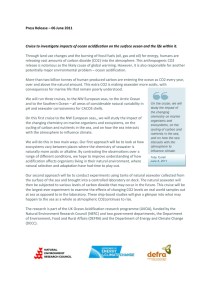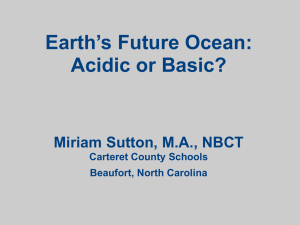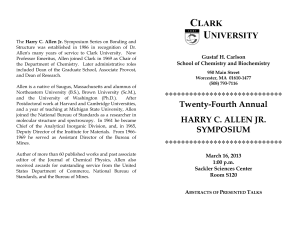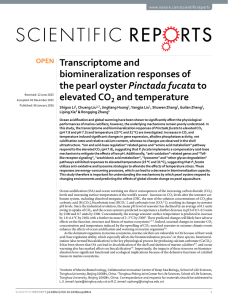The Acid Test – Ocean Acidification
advertisement
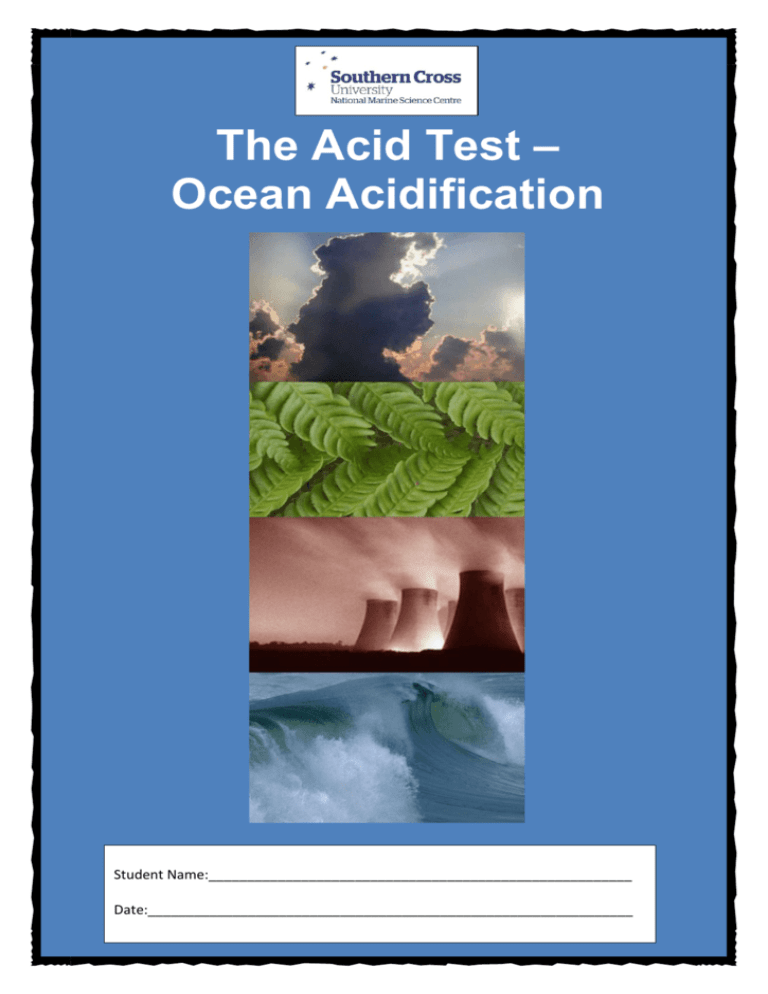
The Acid Test – Ocean Acidification Student Name:_______________________________________________________ Date:_______________________________________________________________ Ocean Acidification Introduction The World’s oceans play a vital role in the Earth’s life support system through regulating climate and global biogeochemical cycles through their capacity to absorb atmospheric carbon dioxide (CO2). The oceans currently absorb half of the CO2 produced by anthropogenic sources. Put simply, climate change would be far worse if it wasn’t for the oceans. However, there is a cost to the oceans. When carbon dioxide dissolves in seawater it forms carbonic acid. As more CO2 is taken up by the ocean’s surface, the pH decreases moving towards a less alkaline and therefore more acidic state. This is called “ocean acidification” and is happening at a rate that hasn’t been experienced for at least 400,000 years. The effect of ocean acidification on marine ecosystems and organisms that inhabit them has only recently been recognized and is of serious concern to scientists and policy makers involved in climate change, biodiversity and the marine environment. The Carbon Cycle Study Aims In this activity, students will review the carbon cycle, test how an increase in dissolved CO2 can affect the pH of seawater and hypothesize on how this could affect calcium carbonate-based organisms. Part 1: pH Materials: Bleach Sea water Tap water Universal indicator solution Soda water Vinegar Test tubes (5x) pH test strips Drinking straw Coral fragments Start by placing 20ml of each fluid in separate test tubes. Estimate and record the pH of each fluid. Also record the colour for each fluid. Add 5 drops of “universal indicator” solution to each fluid. Record the colour. Using the colour guide record the actual pH of each liquid. Liquid pH Predicted Colour Start pH Actual Colour End Bleach Seawater Tap water Soda water Vinegar Part 2: CO2 in seawater Place the end of the drinking straw in the test tube containing seawater. GENTLY blow through the straw. Continue to blow bubbles through the sea water until the colour changes. Record the colour and new pH value. Liquid Sea water Colour (start) Colour (end) pH Part 3: Calcium carbonate in vinegar Place fragments of coral into the jar containing vinegar. Observe and record what occurs. Observations: Questions: 1. Was your predicted pH similar to the actual pH of the fluids? Are you surprised with your findings? 2. From the results of bubbling your breath through the seawater explain why the pH changed. 3. When you add the coral fragments to the vinegar the following reaction occurs; CaCO3 + 2CH3COOH ------> CO2 + H2O + Ca(CH3COO)2 What are the bubbles composed of? What would happen if you left the coral fragments in the vinegar over night? 4. Why is ocean acidification a concern?
